Unfortunately, this deal has expired 12 February 2024.
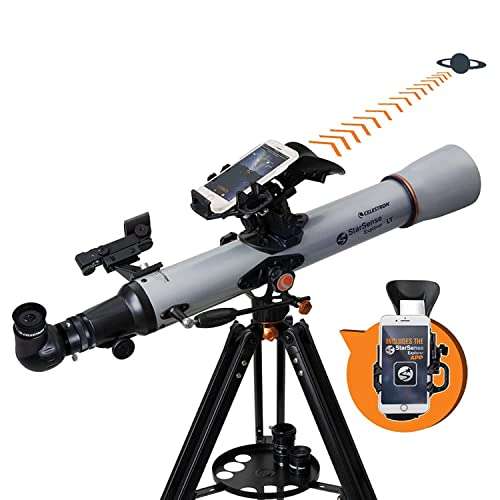





*
432°
Posted 13 December 2023
Celestron StarSense Explorer LT 70AZ Refractor Telescope (and guide with alternatives for beginners)
Free ·
Shared by
ecuador
Joined in 2013
27
2,224
About this deal
This deal is expired. Here are some options that might interest you:
See updated guide on newer deal here.
We get many scope posts, many of them on rubbish devices, others on niche devices. I try to help beginners on these, but I thought I'd make a post myself with helpful info (see bottom) and best values on various budget levels just in time for Christmas. The links are only for the Amazon deals, I will post in the comments the specialised astro-retailers you can trust (where you can find the prices I list). Note that you can always get better value second-hand, but that may be a great experience for a beginner.
The title deal is for a 70mm refractor with a sturdy enough tripod and smartphone integration so that you can see where it is pointed and find objects easily, making it quite beginner-friendly. Basically you pay a bit extra for the "assistance" in finding objects, but you sacrifice some light gathering ability compared to e.g. the cheaper Heritage 100P "dobsonian" mentioned below. Note there are ways to add some push - goto ability to the dobsonians with your smartphone (or any scope, see end of post) - but the StarSense is sleeker in general.
Let's look at some of the best values per price tier for all types of users:
up to £100:
up to £150:
up to £200:
up to £300:
I hope this is clear. If you have questions about scope types, other advice, more expensive setups etc, take a look at this slide deck from back when I was giving the buying guide talk at my local astro club (good idea to join one if you can). The prices are old (and no newer models), but the information is sound and helpful.
Another helpful article is a comparison I did (with photos) of how various telescopes compare when viewing/photographing a planet (I also did a comparison for terrestrial viewing - less relevant if you want just astro)
I also mentioned that you can add Push-to abilities (smartphone assisted object finding) to any manual telescope. You can do that by mounting your smartphone on the scope (e.g. an eyepiece holder/adaptor or other means) and using e.g. Astrohopper.
For those with an iPhone there is also Polar Scope Align Pro which does it in what I consider a sleeker way (see here for a blog post from a user). Disclaimer: I developed that app, but as it is my hobby, and not my business, you can just pm me for a free code (the free version is mainly for polar alignment of equatorial mounts, so won't do the push-to). Oh, and you'll need good weather app, as clouds will stop any telescope. Why not try my free (no ads) Xasteria Weather app for forecasts for astronomers (along with ISS passess etc).
We get many scope posts, many of them on rubbish devices, others on niche devices. I try to help beginners on these, but I thought I'd make a post myself with helpful info (see bottom) and best values on various budget levels just in time for Christmas. The links are only for the Amazon deals, I will post in the comments the specialised astro-retailers you can trust (where you can find the prices I list). Note that you can always get better value second-hand, but that may be a great experience for a beginner.
The title deal is for a 70mm refractor with a sturdy enough tripod and smartphone integration so that you can see where it is pointed and find objects easily, making it quite beginner-friendly. Basically you pay a bit extra for the "assistance" in finding objects, but you sacrifice some light gathering ability compared to e.g. the cheaper Heritage 100P "dobsonian" mentioned below. Note there are ways to add some push - goto ability to the dobsonians with your smartphone (or any scope, see end of post) - but the StarSense is sleeker in general.
Let's look at some of the best values per price tier for all types of users:
up to £100:
- Celestron Astromaster LT70AZ (£99) - A 70mm refractor which I normally don't recommend over the Heritage 100P as it's been at £130+ for over a year now, but back at this price it is a solid choice. The tripod is not flimsy like other cheap refractors and it seems a lot of people/kids like the fact that it looks "more like a telescope" compared to mini dobsonians. I also prefer it over reflectors of up to 100mm/4" for planets (see at the bottom of post for more on that).
- Skywatcher Heritage 76 (£65) - A 76mm mini-dobsonian telescope. This is the absolute minimum telescope I'd ever recommend. If you don't have the budget, go for a pair of 8x40/7x50/10x50 binoculars instead (see here). It's not great for planets (will still beat binoculars of course), but quite good for wide angle views, despite it being limited by a spherical mirror.
up to £150:
- Skywatcher Heritage 100P (£129) - 100mm Dobsonian reflector. This is usually my beginner "budget" recommendation, with better performance on Deep Space Objects compared to the 70mm refractors like the Astromaster above and a true parabolic mirror. It's easy to use just put it on a table and point, if you don't enjoy this, you will probably not enjoy telescopes in general.
- Celestron StarSense Explorer LT 70AZ (£143) - The title scope. Basically the same 70mm refractor optics as the Astromaster LT70AZ, but you get the extra smartphone integration as discussed above..
up to £200:
- Skywatcher Heritage 130P Flextube (£195) - This is a favourite among amateur astronomers as it has over 60% more light-gathering ability than the 100P (great if you have access to dark skies), while being as easy to transport with the collapsible flex-tube system.
- Celestron StarSense Explorer LT 80 AZ (£178) - The bigger brother of the Starsense 70AZ so mostly the same comments apply, with 30% more light gathering ability than its little brother for about 30% higher price.
up to £300:
- Skywatcher Heritage 150P Flextube (£255) - Some amateur astronomers consider the 150mm/6" to be the "minimum" for enjoying deep space objects (galaxies, nebulae, globular clusters etc). I find thresholds silly, but this "fits the bill" at a further 33% more light gathering than the 130P.
- Celestron Astromaster 130EQ /w Motor Drive (£219) - While most people (and beginners) prefer the simplicity of dobsonians, the equatorial mounts that can track the stars as the earth rotates, are my preference. They require some setup (assembly usually, plus some polar alignment so that the main axis points to the north celestial pole), but will then allow you the convenience of setting circles and automatic tracking of objects. This will help for some astrophotography too (easier planetary, plus piggyback wide-field with a camera lens). "Old school" scope, no instant gratification here - but I personally prefer equatorial mounts myself for their abilities.
- Sky-Watcher SkyHawk-1145PS AZ-GTe (£299) - This is one of the cheapest computerised (GoTo) telescopes you can buy. You obviously pay "more" for "less" of an actual telescope, but, after an alignment process, you select an object on your smartphone and it will just point to it.
I hope this is clear. If you have questions about scope types, other advice, more expensive setups etc, take a look at this slide deck from back when I was giving the buying guide talk at my local astro club (good idea to join one if you can). The prices are old (and no newer models), but the information is sound and helpful.
Another helpful article is a comparison I did (with photos) of how various telescopes compare when viewing/photographing a planet (I also did a comparison for terrestrial viewing - less relevant if you want just astro)
I also mentioned that you can add Push-to abilities (smartphone assisted object finding) to any manual telescope. You can do that by mounting your smartphone on the scope (e.g. an eyepiece holder/adaptor or other means) and using e.g. Astrohopper.
For those with an iPhone there is also Polar Scope Align Pro which does it in what I consider a sleeker way (see here for a blog post from a user). Disclaimer: I developed that app, but as it is my hobby, and not my business, you can just pm me for a free code (the free version is mainly for polar alignment of equatorial mounts, so won't do the push-to). Oh, and you'll need good weather app, as clouds will stop any telescope. Why not try my free (no ads) Xasteria Weather app for forecasts for astronomers (along with ISS passess etc).
Community Updates
Edited by ecuador, 28 December 2023
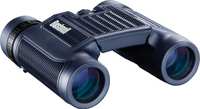
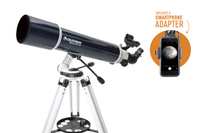
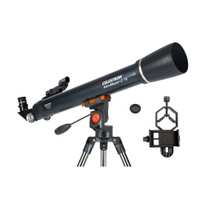

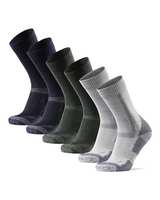




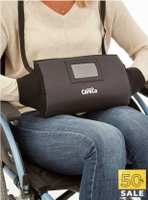
44 Comments
sorted byThe #2 UK retailer is probably Rother Valley Optics. They do have a Trustpilot account, so they have lots of reviews even though they are probably smaller. They are as trustworthy in general (and they started as a store - you can still visit them in Rotherham).
Note that generally, with astro-retailers, the price does not include shipping, and will vary depending the actual size/weight of the telescope.
Not sure if there's any point going to £400/£500 price tiers with further recommendations, I don't generally spend more than £300 for a Christmas present (edited)
and exceptional results
Suggested read
https://thebigbangoptics.com/dobsonian-vs-refractor-telescope/#:~:text=Dobsonian%20telescopes%20use%20mirrors%20to%20gather%20light%20and,the%20APO%20refractors%20are%20best%20suited%20for%20astrophotography.
I am sorry though, you cannot see the American flag on the moon. You see, our colonies did not carry a large enough flag up there, so the limits that the atmosphere puts on the resolution of our earth-bound telescopes do not allow us to see it. (edited)
I could add it as it's a different suggestion with good value, although I would probably consider it a "3rd choice".
So, you have to compare it with the nearest ones in price. One is the Celestron StarSense 80 at £178, which has the smartphone integration so it helps you find objects (the Omni simply holds a phone on the eyepiece so you can take a shot easier - that's a £5 accessory). The Omni is bigger in aperture which is good for faint objects, but the StarSense 80 has a longer focal length which reduces chromatic aberration (a purple or red fringe around bright objects) which will probably make planets look better on it.
Now, there is the Heritage 130P Flextube at £195, which has an even bigger aperture than the Omni, and no issues with chromatic aberration, so, visually, it will be better than either.
I would choose the omni probably over the other two probably only if I both did not care about the StarSense pointing system and I wanted dual terrestrial/astro use. You can do that with a refractor and an erecting diagonal, but it's almost impossible with a dobsonian reflector.
Hope this helps! (edited)
Any Observatory trip suggestions around London that arrange for kids to view through their telescope systems? (edited)
Ended up getting the Zhumell 100, supposedly exactly the same as the Heritage 100p with some slightly different eyepieces.
How easy is it to find objects with just an app? Does it need to be attached to the telescope or does that just aid the direction to point?
Also collimation! How would I know if it had/needed doing. Sounds like the fearful buzzword of trying to get into astronomy.
Ah, collimation - aligning the mirrors. Most telescopes should come collimated, unless something has gone wrong, and, especially newtonians don't need to be perfectly collimated (the SCTs are a different discussion). In fact, the Heritage 76 and 100P can't even have their primary mirror collimated, it is fixed from the factory. I think the Zhumell 100 is the same. Just focus on a star, then slowly defocus and see if the circles around the star seem reasonably symmetric. If they do, you are fine. If not, the easiest is to ask for help at your local astro society.
The Zhumell should be optically identical to the Heritage 100P. I do not recommend it if it is at a similar price compared to the Heritage, as it has a bit worse set of eyepieces and missing the quite useful 2x barlow. If it's like £20+ cheaper it would make sense. Edit: I see the Zhumell is £104 on Amazon. Yes, that makes sense as a price for it (edited)
I would love to get into astronomy but I've been put off in the past by the bewildering choice of telescopes.
I would class myself as a beginner and only bought these because I found them very cheap (the astro for 30£ start of lockdown and then the 130p for 100£ a few month this ago off fb).
I use those chunky celestron phone mounts too.
From personal use, here are my pros and cons between the two different styles of scopes and their practically. Not quality of views.
Astromaster70
- The EQ mount allowed micro adjustments which meant keeping planets in view was very easy.
- Comes with a tripod so you don't need a table top to use and pop up anywhere.
- Light weight.
- the focuser is generic, with a knob adjustment so any photos adaptors stay firmly in place.
- the eye pieces are at a conformable height.
- You look in to the scope from the low back end. You can adjust the angle of the eyepiece so you can stand on either side of the scope and use it.
Heritage 130p
- no micro adjustments, so keeping track vertically can be tricky having to loosen and tighten the lock.
- if you are viewing something really high in the sky, you have to adjust the mounting point of the scope so it balances the scope, which means you have to readjust and rebalanced when pointing to another object.
- though compact for its style of scope, it's still pretty heavy and chunky.
- it needs a table top/stool/chair for it to sit on.
- the focuser is not ideal for a phone mount. It very difficult to adjust the focuser while you have a phone mount attached to it.
- you look in to the scope at the top high end. And have to stand on the left facing it side on.
Though the viewing quality is way better with the 130p, I've had no luck taking any photos with it because it's harder to track, focus and balance it with a phone adapter on it.
There's an even bigger, but more US-centric forum: Cloudy Nights. (edited)
This thread has been really good but as an absolute novice I want to get a telescope my wife and daughter can use to view planets. £180-250
im after a telescope for the kids, went for this one some time ago from Amazon and was usless (most likely me not using it correctly at the time!) what would you recommend for a starter kit that will easily and clearly see the moon and the surface?
It depends a lot on your budget, but all the ones I posted above will be good scopes. A usual recommendation is the Heritage 100p, which requires minimal time to set up and is quite powerful in general.
Whatever you get, do visit a local astronomy society with it on their open night and they will show you how to use it.
No idea why national geographic keeps slapping their brand on the worst rubbish.